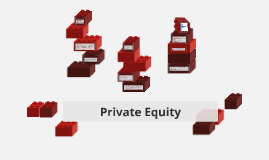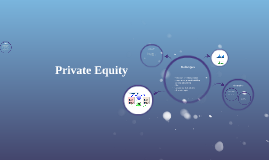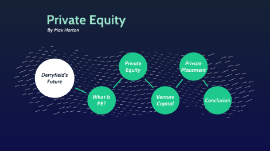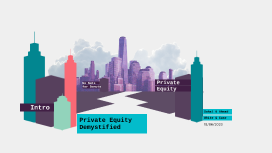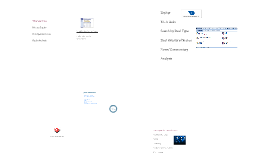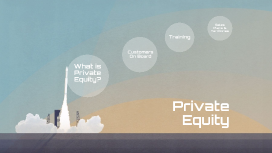Private Equity
Transcript: Merchant bankers in London and Paris financed industrial concerns in the 1850s; most notably Crédit Mobilier, founded in 1854 by Jacob and Isaac Pereire, who together with New York based Jay Cooke financed the United States Transcontinental Railroad. J. Pierpont Morgan's 1901 acquisition of Carnegie Steel Company from Andrew Carnegie and Henry Phipps for $480 million represents the first true major buyout. In 1938, Laurance S. Rockefeller helped finance the creation of both Eastern Air Lines and Douglas Aircraft and the Rockefeller family had vast holdings in a variety of companies. Eric M. Warburg founded E.M. Warburg & Co. in 1938, which would ultimately become Warburg Pincus, with investments in both leveraged buyouts and venture capital. India gets major of its start ups funded from Singapore. Singapore acts as Hub for start up VC's in ASIA. First two venture capital firms in 1946: American Research and Development Corporation (ARDC, By Georges Doriot, the "father of venture capitalism ) and J.H. Whitney & Company. ARDC is credited with the first major venture capital success story when its 1957 investment of $70,000 in Digital Equipment Corporation (DEC) would be valued at over $355 million after the company's initial public offering in 1968 (representing a return of over 500 times on its investment and an annualized rate of return of 101%) ARDC total investment in 150 firms. First two Ventured Start ups :- a) Fairchild Semiconductor (1957) b) Venrock Associates (1969) Different Stages of a start up has different roles of funding. A hypothetical Start up goes from a IDEA to IPO. It goes from the owner getting 100% of nothing to some amount of shares in a big company and getting the returns on investments to all the fund providers along with the owner himself. 1946-81 SMALL FUNDING 1982-93- The first boom and bust cycle, was characterized by the dramatic surge in leveraged buyout activity financed by junk bonds and culminating in the massive buyout of RJR Nabisco before the near collapse of the leveraged buyout industry in the late 1980s and early 1990s 1992-2002- The second boom and bust cycle emerged from the ashes of the savings and loan crisis, the insider trading scandals, the real estate market collapse and the recession of the early 1990s. This period saw the emergence of more institutionalized private equity firms, ultimately culminating in the massive Dot-com bubble in 1999 and 2000. 2003-07- The third boom and bust cycle came in the wake of the collapse of the Dot-com bubble—leveraged buyouts reach unparalleled size and the institutionalization of private equity firms is exemplified by the Blackstone Group's 2007 initial public offering. Analyzing the potential in the plan of the start up, the ROI and the exit strategies. Getting availability of the funds with other investors( particularly in case of VC's ). Setting terms of the Equity Funding. Final Documentation. Takes active part in the functioning and working of the firm. Exits whenever they want to with good ROI ( generally by selling the investment or selling out an IPO ) How This Funding Works Venture Capitalist :- Invests in either a firm which is running and needs cash for growth. Angle Investors :- Invests in a plan that is still on paper and needs funds for execution. Leveraged buyout funds :- Typically acquire controlling stakes, either alone or in partnership with other PE firms, of mature, cash-flow-stable companies. Growth equity funds invest in more mature businesses that are looking to scale operations (organically or through M&A) and enter new markets Private Equity Segmentation The First's in Private Equity AngelList: It has been used by more than 1,000 companies to find accredited investors -- often a mix of "angels" and venture capitalists, but smaller investors can play, too. CircleUp: San Francisco startup specializes in helping inventors of consumer products such as pet food and organic snacks find investors. Crowdtilt: "Groupfunding" site backed by Y Combinator lets groups of friends launch funding campaigns for projects or purchases; money is collected via credit card, and the site takes a cut. FundAnything: The site launched by Donald Trump to offer artists, entrepreneurs and philanthropists "money for their dreams." FundersClub: It was launched in July 2012 as an "online venture capital firm" whose money comes from individual accredited investors. Kickstarter: Best known as a place to find backers for an artistic endeavor or invention, but small tech companies and other businesses can also launch funding campaigns. Liquidnet: It offers a platform to let private companies sell shares directly to institutional investors. SecondMarket: The firm also allows for the buying of private-company shares, but by individuals. Wefunder: It offers "crowdfunding for startups," lets investors put in as little as $1,000 and is making plans to welcome non-accredited investors once federal rules permit. Different platforms available






